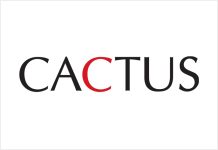
eLife, in collaboration with Stencila, is pleased to announce today the next phase of development for the Executable Research Article (ERA), bringing computationally reproducible research papers to more authors and publishers.
The organisations have partnered on the open-source ERA project since 2017, taking it from the idea stage through to demonstration and, within the last six months, into production at eLife. The project, which allows authors to enrich their work with interactive code and data, has received substantial interest from researchers, publishers and the broader scientific community. To date, six ERAs have been published in eLife, with more in the pipeline. eLife and Stencila have now extended their partnership to bring about the next phase of ERA’s development in 2021.
Their work will involve six individual streams of feature development, all focused on reducing barriers to the authoring and publication of ERAs based on user feedback and lessons learned from the project over the last three years. The aim is to further enhance the ERA technology stack to serve a wider variety of author and publisher use cases, including increasing the speed and scalability of ERA publication.
New developments will include allowing authors to convert, execute and preview ERAs offline. eLife and Stencila will create a package that makes it easier and faster for authors to preview ERAs in their local environment, before uploading the finished product to Stencila Hub for eventual submission to a journal, preprint server or self-hosted website. Additionally, authors will soon be able to edit their ERAs offline.
For publishers, there is a need to archive a complete executable copy of a research article in long-term storage, and make it available to readers as a downloadable attachment with the online publication. While most ERAs today rely on generic Docker containers, Stencila and eLife will work to ensure future ERAs are packaged in significantly smaller, individually optimised Docker images – making it more cost-effective for publishers to host and distribute ERAs.
Giuliano Maciocci, eLife Head of Product and Experience, says: “Since releasing the first demo of ERA in 2019, we’ve received positive and invaluable feedback from the scientific community. We’re now looking forward to continuing our work with Stencila, improving on ERA’s key aspects of interactivity, reproducibility, portability, containerisation and hosting, as well as the overall ERA authoring experience.”
Giulia Guizzardi, eLife Innovation Officer, adds: “By extending our work with Stencila on this exciting project, we hope to make ERA an even more compelling proposition for researchers and publishers alike.”
The new publishing format is already being adopted beyond eLife, with GigaScience Press and River Valley Technologies recently launching their first ERA in the scientific journal, GigaByte. The newly published article, which describes a new immunoinformatics tool called epitopepredict, leverages ERAs’ capabilities to present interactive examples of the tool’s application to the study of coronavirus immunity.
Scott Edmunds, Chief Editor of GigaByte, says: “GigaScience Press has been promoting reproducible research and talking about the potential for executable articles for many years, so it is brilliant to see this finally become a reality through the efforts of Stencila and eLife. We were particularly impressed with how seemingly simple it was to integrate ERA into our publishing workflow, and look forward to seeing it become a standard among many other journals.”
Nokome Bentley, Founder and CEO of Stencila, adds: “We are really excited about the next steps in the development of ERAs. There are plenty of opportunities to improve the workflow and further reduce barriers to reproducible publishing, particularly for researchers with less technical experience. We are grateful for eLife’s continued support and vision, and hope to see other publishers follow GigaByte’s lead in adopting this technology.”
For more information about the next phase of eLife and Stencila’s work on ERA, see the accompanying blog post at https://elifesciences.org/labs/a04d2b80/announcing-the-next-phase-of-executable-research-articles.
To read the full announcement from GigaScience Press about the launch of its first ERA, ‘epitopepredict: a tool for integrated MHC binding prediction’, see http://gigasciencejournal.com/blog/gigabyte-executable-research-articles. The ERA is available to view on Stencila at https://gigabyte.stencila.io/epitopepredict.
And to learn more about the ERA project, visit elifesci.org/era.



























